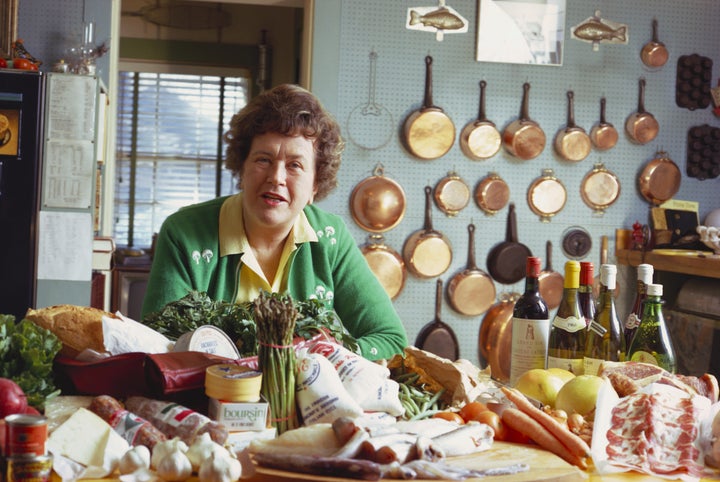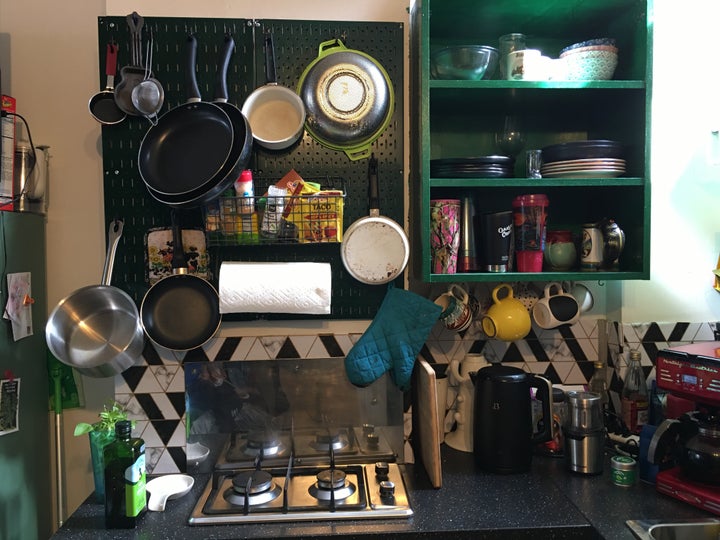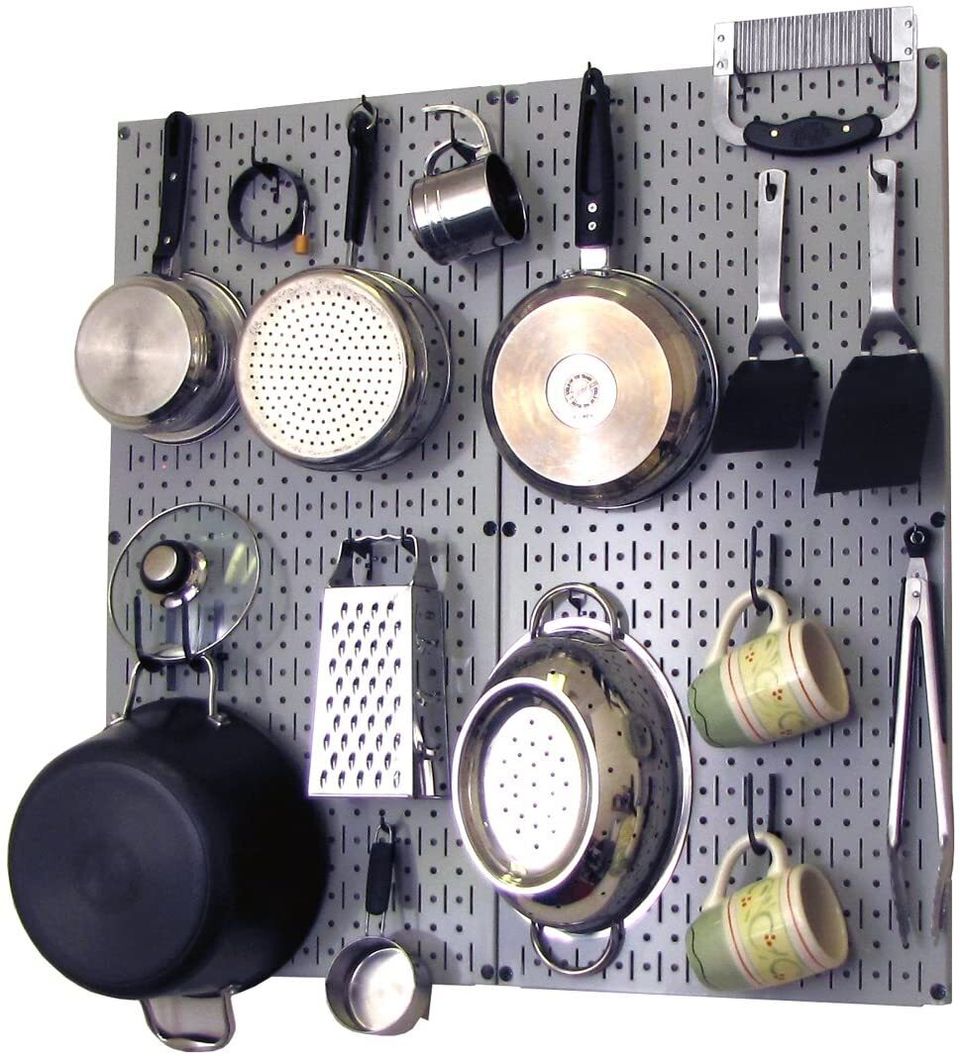
The late, great Julia Child was known for loving butter, embracing mistakes and making home cooking as enjoyable as possible. While this was often shown through in her encouraging on-air disposition, it was also shown in the physical layout of her kitchen. Child always had everything she needed right on hand — largely because of her giant kitchen pegboard, which housed her pots, pans and every other beloved utensil.
If you’re not a Julia Child stan, you may not know that she is largely credited for popularizing the kitchen pegboard. (The real stans will know it was actually her short king husband, Paul, who came up with it, but I digress.) At 6-foot-2, Child was no stranger to the concept of vertical space. Rather than storing her pots and pans horizontally in a drawer or cabinet, she hung them from the wall vertically, taking advantage of all the wall space she could.
I’ve always loved the look of a kitchen pegboard or those to-die-for Pinterest kitchens with the copper hanging pot racks. I lusted after them for years, wrongfully assuming I’d never have the space to install one in a small, compact city kitchen. After moving into my current studio apartment with a “kitchen” that’s really just a singular wall, I spent months figuring out how to store my cookware. With limited cabinet space and no closets, it seemed impossible to ever find a stress-free solution to organizing my kitchen.

One night, when deep in an internet wormhole, I realized my pegboard dream wasn’t just achievable in my small apartment ― it was going to completely upgrade the way I cook. On Amazon, I found an emerald green, metal kitchen pegboard, tall enough to hold all my pots but thin enough to fit on the small section of wall above my stove. I ordered it immediately, along with an idiot-proof drill, some wall anchors and some extra hanging accessories.
I installed it the day it arrived and instantly hung all my pots, pans and utensils. I was amazed at how nice it made my kitchen look, clearing off surfaces and not making every open place look so cluttered. A few weeks later, I ordered a spice rack holder with a paper towel bar that attaches to my pegboard, clearing even more space from my shelves and window sill. Because it’s right over my stove, it makes it super easy to grab all my spices or to rip off a paper towel to wash my hands after preparing raw meat.
If you’re not super handy, I’d definitely ask a friend to come help with installation. Essentially you find where you want to hang it, make sure it’s level, and then drill it into the wall. It wasn’t Ikea-furniture difficult, but the boards are seven pounds each and can be a little cumbersome to lift and level alone. And if you have drywall, you’re going to want to anchor your pegboard into the wall, which I promise is easier than it sounds!
I always knew I loved the look of a kitchen pegboard, but I never realized how much it would improve cooking in a tiny kitchen. It’s such a smart way to really make the most of the little space you have, and looking super Instagrammable is really just a bonus. My love for my metal kitchen pegboard goes beyond words. It’s so practical, looks so cool, and means I don’t really have to dry any of my pots and pans and can let them “air dry” on the board.
For the love of Julia or general kitchen organization, here’s everything you need to install a dreamy metal kitchen pegboard of your own.
HuffPost may receive a share from purchases made via links on this page. Every item is independently selected by the HuffPost Shopping team. Prices and availability are subject to change.
This comes in nine colors: black, blue, green, matte gray, metallic silver, silver, red, yellow, orange and white.
This comes with a USB charger, 10 different drill bits, 10 drivers, a level measure and 10 screws and anchors (though you shouldn't use these for the pegboard, but rather the heavy-duty anchors listed above).




